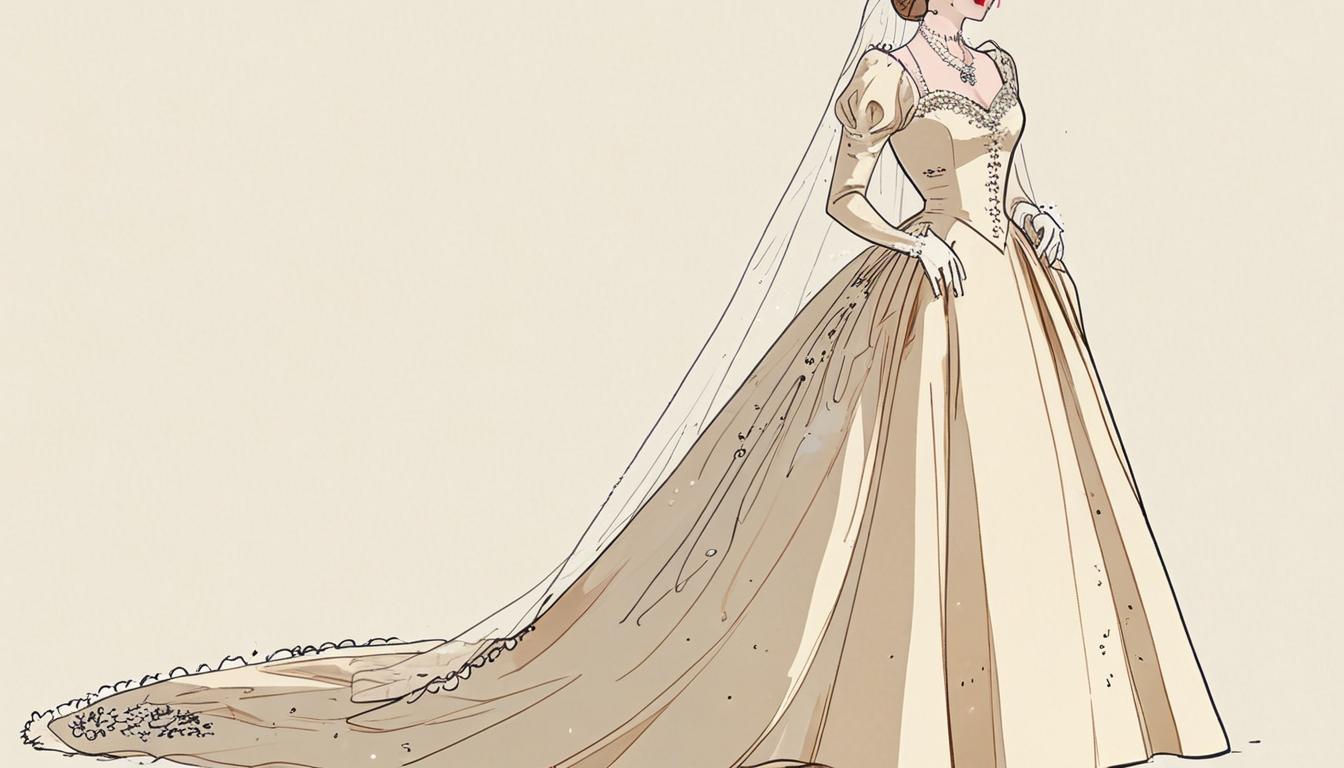In post-war Britain, the nation grappled with austerity that extended into every aspect of daily life, including clothing, as rationing severely limited fabric availability until 1949. This backdrop of widespread sacrifice sparked a notable public reaction when Princess Elizabeth, later Queen Elizabeth II, was reportedly granted extra clothing coupons for her bridal gown ahead of her marriage to Philip Mountbatten in 1947, drawing sharp contrasts with the ordinary citizens' experiences.
With Britain recovering from the Second World War, rationing shaped not only food consumption but also the fashion scene. University of Warwick professor Susan L. Carruthers, in her recent book "Making Do Britons and the Refashioning of the Postwar World," published 80 years after the war’s conclusion, explores the tension between wartime sacrifices and signs of emerging post-war optimism reflected in clothing. She writes, “Over the course of the thirteen months that separated Germany’s defeat from this last hurrah, many Britons ceased thinking of victory as a euphoric moment, seeing it instead as the start of an unfolding era whose dispiriting character was becoming ever clearer."
Wartime clothing regulations meant that most people had to adopt limited wardrobes, with everyday garments sold at price points that were disproportionately high compared to average earnings. For example, a woollen dress cost almost £16 in 1945 while the average weekly wage for men was just over £6, making fashionable garments luxuries rather than commonplace purchases. To assist with frugality and self-repair, the Board of Trade even developed helpful campaigns, including a cartoon character called Mrs Sew-and-Sew who offered advice on maintaining clothing and conserving precious materials like rubber corsets.
In contrast to this widespread need for thrift, the royal family’s preparations for Princess Elizabeth's wedding occasioned controversy. The princess was granted approximately 100 extra clothing coupons for her dress – a figure reportedly increased from initial palace requests that may have approached 800. This allocation far surpassed what was available to most brides, provoking speculation about fairness amidst continuing austerity. Professor Carruthers highlights this disparity: “Austerity sharpened awareness of inequity. Was it fair, some Britons wondered, that Princess Elizabeth received 100 extra clothing coupons for her bridal gown when she married Philip Mountbatten in 1947 while other brides got none?”
The gown itself, designed by Norman Hartnell, was an ivory silk creation adorned with seed pearls and crystals, featuring a 13-foot train – a spectacular dress emblematic of royal opulence that few could imagine owning in those times. To address sensitivities around materials, Hartnell reassured the public that the silkworms producing the fabric were Chinese, not Japanese, as rumours had suggested, recognising Japan's status as a recent enemy during the war.
This royal extravagance stood in stark contrast to the austerity experienced by the general population, who often relied on making do and mending garments to extend their wardrobes. Post-war fashion for most people was defined by economic constraint where styles were dictated by ration books, and personal expression through clothing was limited. Even men's iconic "demob suits"—government-issued civilian suits given to demobilised servicemen—were uniform and functional, aiming to facilitate reintegration into civilian life while avoiding public resentment.
Beyond the royal family, the post-war period also witnessed the arrival of immigrants, particularly from the Caribbean, who introduced flamboyant styles that challenged the prevailing conservative British fashion norms. Their vibrant dresses and fabric-rich zoot suits sparked both intrigue and criticism, highlighting how clothing became both a cultural marker and a political flashpoint.
Despite these tensions, fashion did evolve. The introduction of Christian Dior's “New Look” in 1947, with its full skirts supported by petticoats and a return to a more extravagant silhouette, marked a turning point. Princess Elizabeth’s going-away outfit, designed by Hartnell as a blue velour dress and matching coat, cleverly combined the remnants of wartime austerity with nods to this emerging luxury, featuring a hemline fourteen inches above the ground, aligning with the new fashion trends while maintaining subtlety.
The juxtaposition of Princess Elizabeth's wedding attire with the everyday reality of Britons living under rationing underscores the complexities of the post-war social landscape. It also reflects the delicate balancing act the royal family faced in projecting optimism and continuity while being sensitive to the broader economic hardships of their subjects.
Professor Susan L. Carruthers’s book "Making Do Britons and the Refashioning of the Postwar World," published by Cambridge University Press and priced at £25, delves into these themes, examining how fashion directly mirrored and influenced Britain’s transition from wartime austerity to peacetime change.
Source: Noah Wire Services
